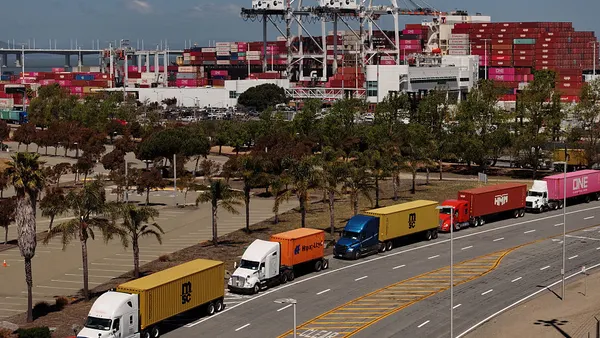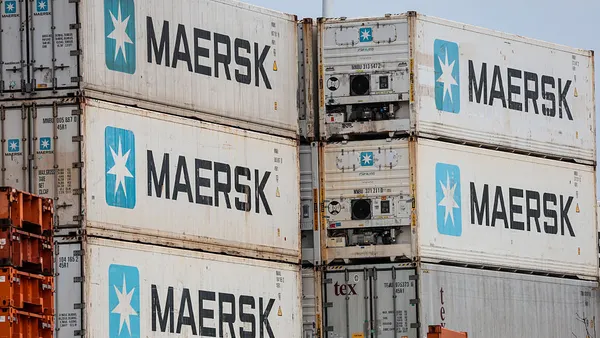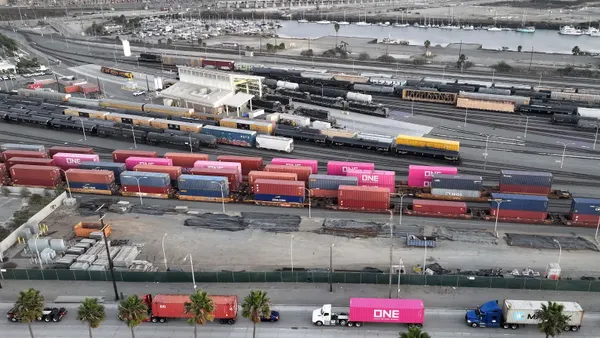Dive Brief:
- Shippers will see skyrocketing LTL rates persist through March, fueled by labor and capacity constraints, sharp general rate increases and carrier consolidation, according to the January 2022 Cowen/AFS LTL Freight Index.
- Per-pound LTL rates are expected to drop slightly in January and then climb through March, resulting in a 35.8% increase compared to the index's January 2018 baseline. That's relatively level with what the index recorded in Q4 2021 — a 35.9% increase.
- "Our data and forecasting models indicate that shippers should expect and plan for the higher costs from the last quarter of 2021—which included the peak holiday season—to continue into the first quarter of 2022," said Tom Nightingale, AFS Logistics CEO, in a statement. "It's a perfect storm that's led to rising shipping rates across the board."
Per-pound LTL rates surge in 2021
Dive Insight:
Cost per LTL shipment surged in 2021 even as weight per shipment dropped, according to an AFS presentation on January's index. Nightingale pointed to general rate increases (GRIs) and surcharges instituted by the carriers as why the normally correlating metrics diverged last year.
"When you combine historically high GRIs with escalating surcharges, the usual mitigating factors such as reduced weight or shorter distance aren't enough to counterbalance the carrier's pricing power and the resulting higher rates," Nightingale said.
XPO Logistics, for example, implemented a 5.9% GRI Nov. 1. Its increases typically occur in Q1, but the company pulled this GRI forward amid high demand for its services.
"We didn't move as quickly as we should have on raising prices on our customers, and we are taking action on this," Mario Harik, CIO and Acting President of LTL at XPO Logistics, said in an earnings call.
But GRIs and surcharges aren't solely to blame for elevated LTL rates. There's not enough truckers or capacity — exacerbated by the closure of Central Freight Lines — to match demand at more shipper-friendly rates. Additionally, consolidation has led the top 10 carriers to control over 70% of all LTL freight, per AFS, giving shippers fewer options.
Harik said XPO's customers "understand that in this market, there's cost inflation in terms of driver wages and getting equipment and all the things that they see in their supply chains." And Old Dominion's 4.9% GRI that went into effect Jan. 3 "is intended to partially offset the rising costs of real estate, new equipment, technology investments, and competitive employee wage and benefit packages," the company said in a news release.
"The two LTL GRIs in 2021 — one in February and another in November — was a double whammy for shippers," said Jason Seidl, Cowen senior analyst for airfreight and surface transportation, in a statement. "This gave carriers significant pricing power and they're leveraging it."
Elevated TL shipping rates aren't expected to ease in Q1, either. The Cowen/AFS Truckload Freight Index, which includes both contract and spot truckload linehaul rates, is projected to reach a new quarterly high of 28.2% above the Jan. 2018 baseline.














